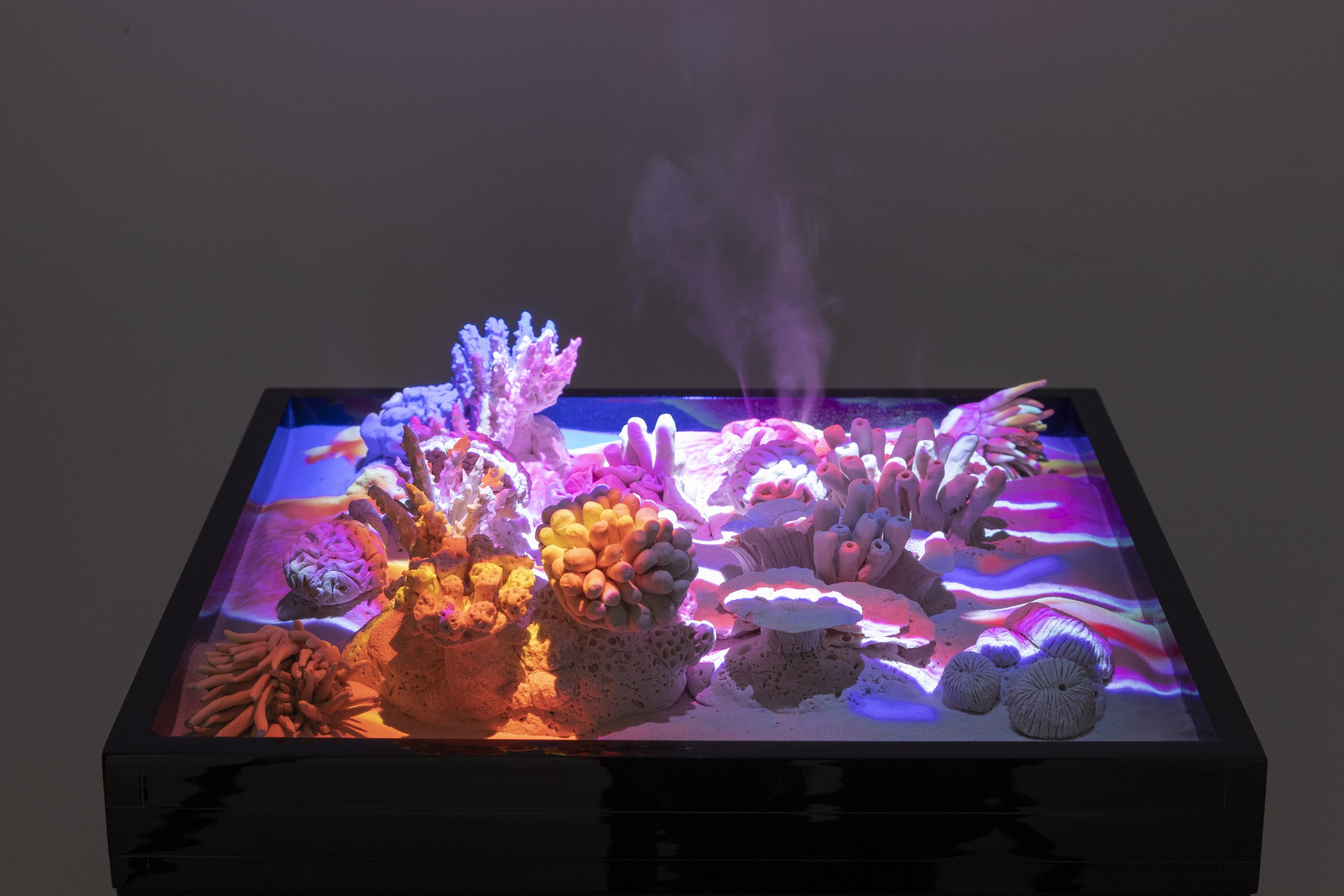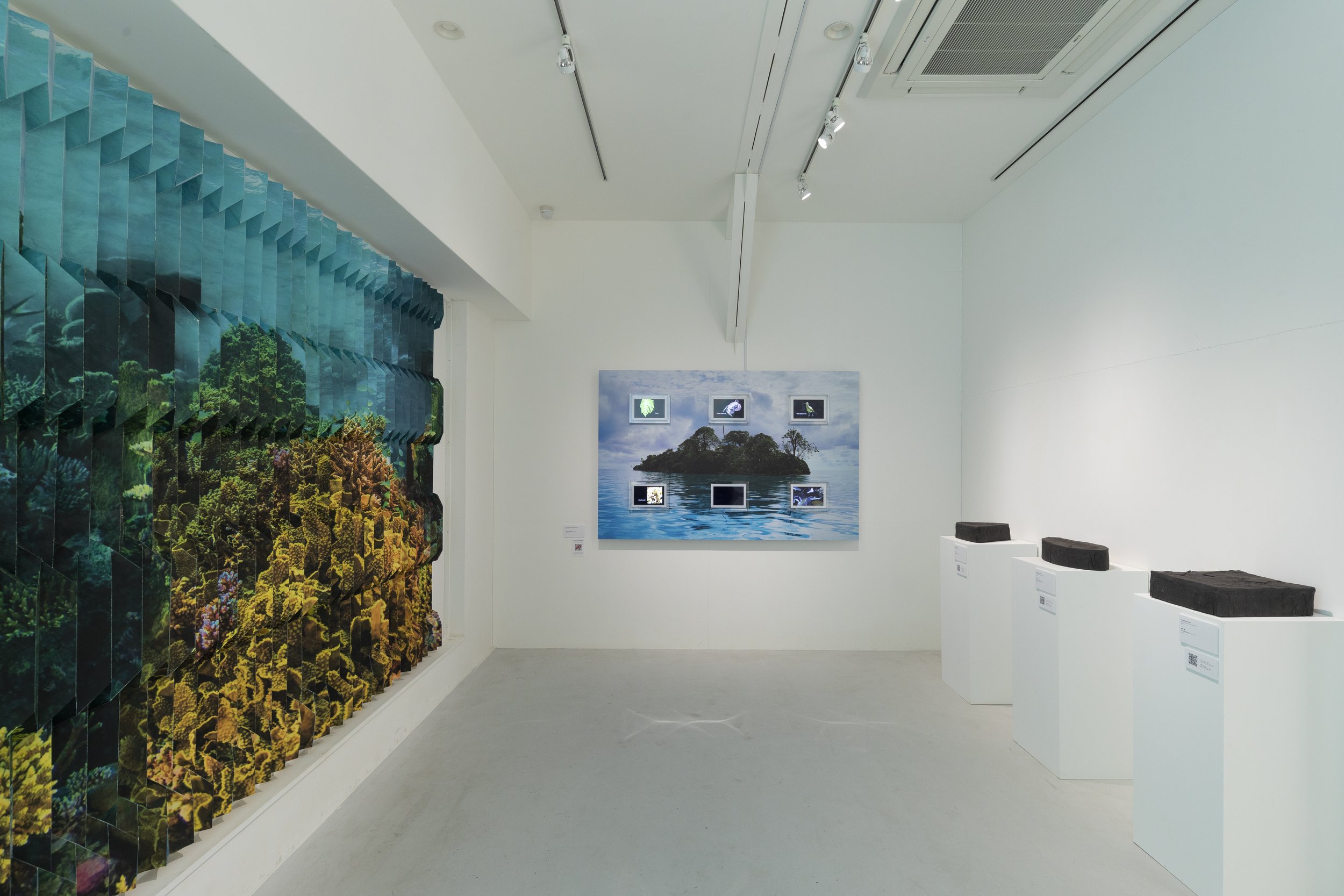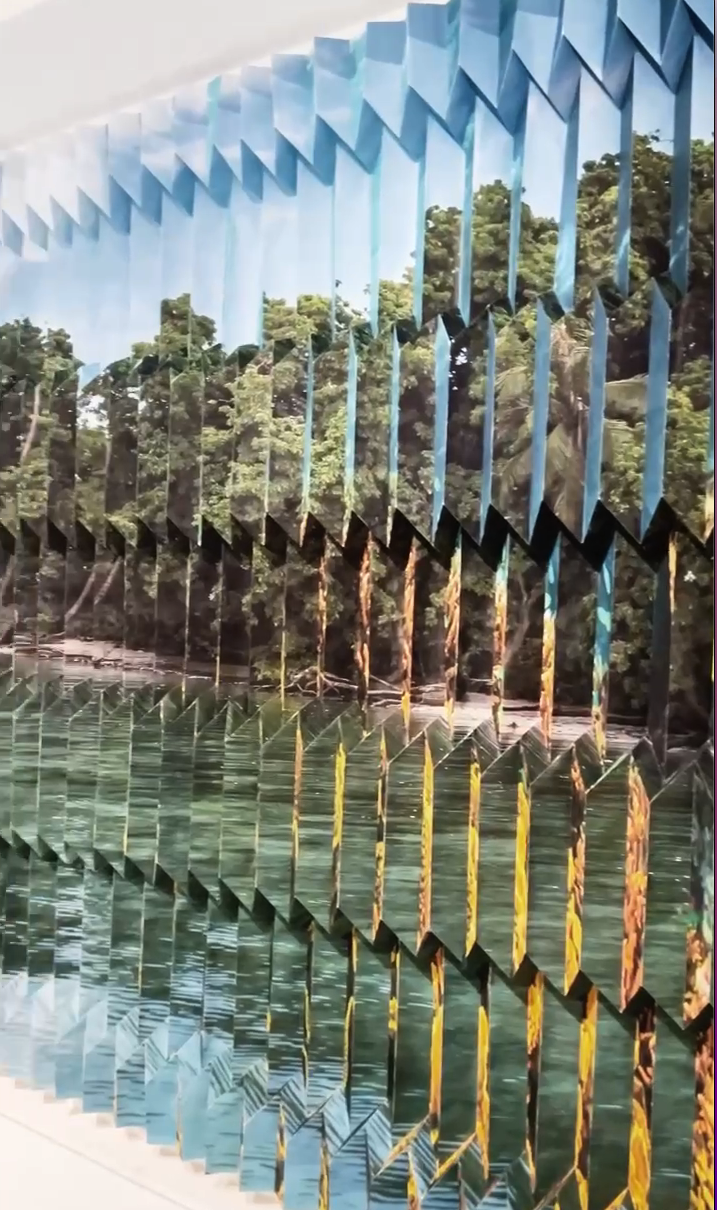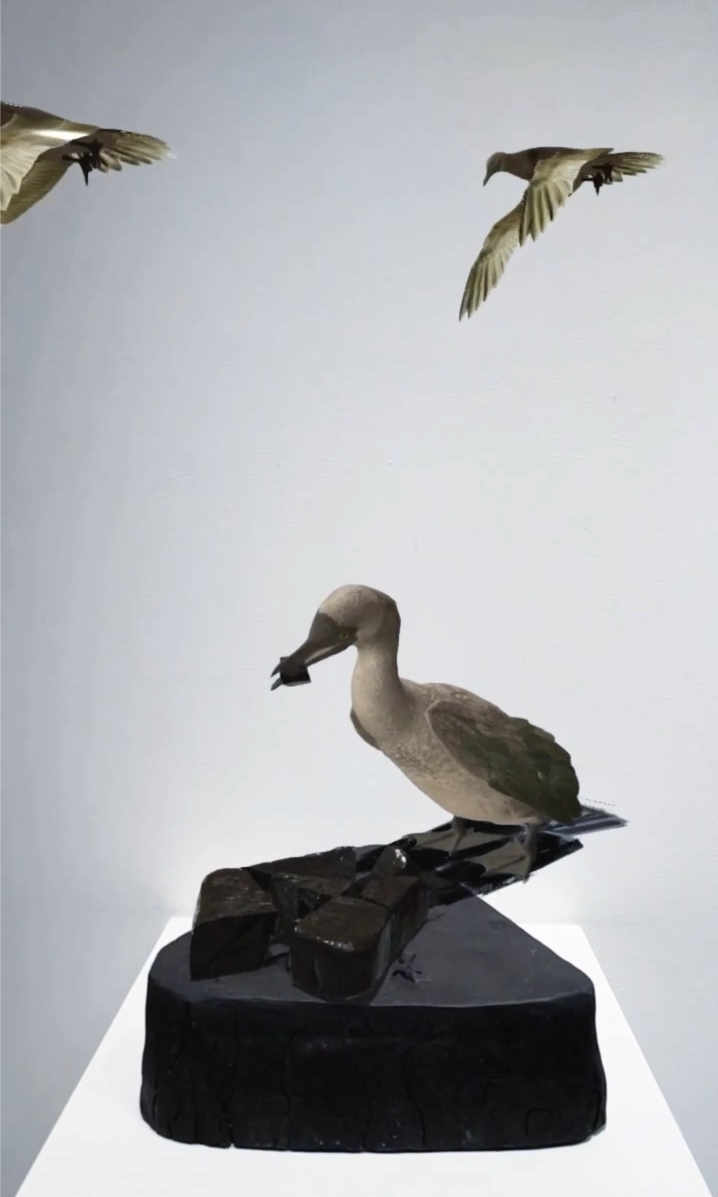Paradise Reborn: Rewilding Palmyra



















Exhibited at Kojin Kyoto
June 9 - 30, 2023
A paradise in the Pacific— once lost due to human-induced environmental damage— as seen through the eyes of artist Taiji Terasaki.
In 2018, artist-activist Taiji Terasaki took part in an artist residency on The Nature Conservancy’s Palmyra Atoll, a wildlife refuge in the Pacific Ocean 1,100 miles south of Hawai’i. The experience had the profound effect of focusing his practice on stories of conservation and environmental action.
The remote atoll, once devastated by human activity during World War II, has since rebounded through thoughtful stewardship by scientists and conservation specialists, and has become a living laboratory to explore solutions to the critical environmental challenges of our time.
In his art, Terasaki uses multiple techniques— both established and innovative— to feature Palmyra’s rich and diverse ecosystem. Images of the atoll are projected onto columns of live mist to convey the delicate and ephemeral quality of a balanced ecosystem. Video stills are fused with the artists signature mist photography to represent the complex food chains found on Palmyra. Traditional still photgraphs are printed on custom Japanese handmade paper and given a hologram effect through a unique mounting process.
Terasaki’s work highlights nature’s resilience and the vitality of Palmyra’s restored effort, and gives us hope. Terasaki would like to thank Osamu Hamada of Hiromi Paper for the Japanese Handmade Paper featured in the “Fragility” paper series of the exhibit.
Paradise Reborn: Rewilding Palmyra was first exhibited at N&A Art Site in Tokyo Japan from February 3rd to February 23rd, 2023. This art exhibit then travelled to Kojin Kyoto in Kyoto and exhibited from June 9 to June 30th. Selected works came back to Hawai’i and are up for preview at the First Hawaiian Center from December 5, 2023 to April 13, 2024.
Taiji Terasaki is a Japanese-American artist based in Honolulu, Hawai’i.
For sales inquiry, please contact Kaylee Clark Lederer at kaylee@taijiterasaki.com. See the preview list here.
A Short History of Palmyra Atoll
Palmyra Atoll is centrally located in the Pacific Ocean, just north of the equator. It has a tropical and humid climate and is home to an incredibly biodiverse and healthy ecosystem. There are no natural mammals on the island. Its terrestrial ecosystem is composed entirely of crabs, insects, and foliage.
First described by an American captain in 1798, and named after a vessel that shipwrecked there in 1802, Palmyra has a unique history. The uninhabited island was rumored site of a pirate treasure, claimed and abandoned by both the United States and the United Kingdom before being annexed by the Kingdom of Hawai’i in 1862.
In 1900 the atoll became a U.S. Territory, and from 1939 the island was heavily used by the U.S. Military as a Navy base. Throughout the course of World War II approximately 6,000 military personnel were stationed there, during which the composition and make-up of the atoll were drastically changed. Remnants of this time remain— empty bunkers, appliances, coca-cola bottles, pollution from chemicals— and unexploded ordinances are still found throughout the atoll.
In 2000, the Atoll was purchased from private ownership by The Nature Conservancy (TNC) establishing it as a research station and preserve. A majority of the land and surrounding waters was then sold to the United States Fish and Wildlife Service (USFWS) and is now recognized as Palmyra Atoll National Wildlife Refuge and Marine National Monument.
Through the efforts of TNC and USFWS, the atoll has since begun to transform back to its natural state. A program to remove non-native coconut palms to foster a healthy natural forest has triggered a trickle-down effect fostering healthy nutrient cycling between terrestrial and marine ecosystems. Rats, an invasive species, have been eradicated from the island and as a result the population of Coconut Crab, the largest of terrestrial invertebrates, is booming.
Today, Palmyra acts as a leading research consortium providing a standard for scientists to study and learn from the resilient nature of nature’s ability to survive.

